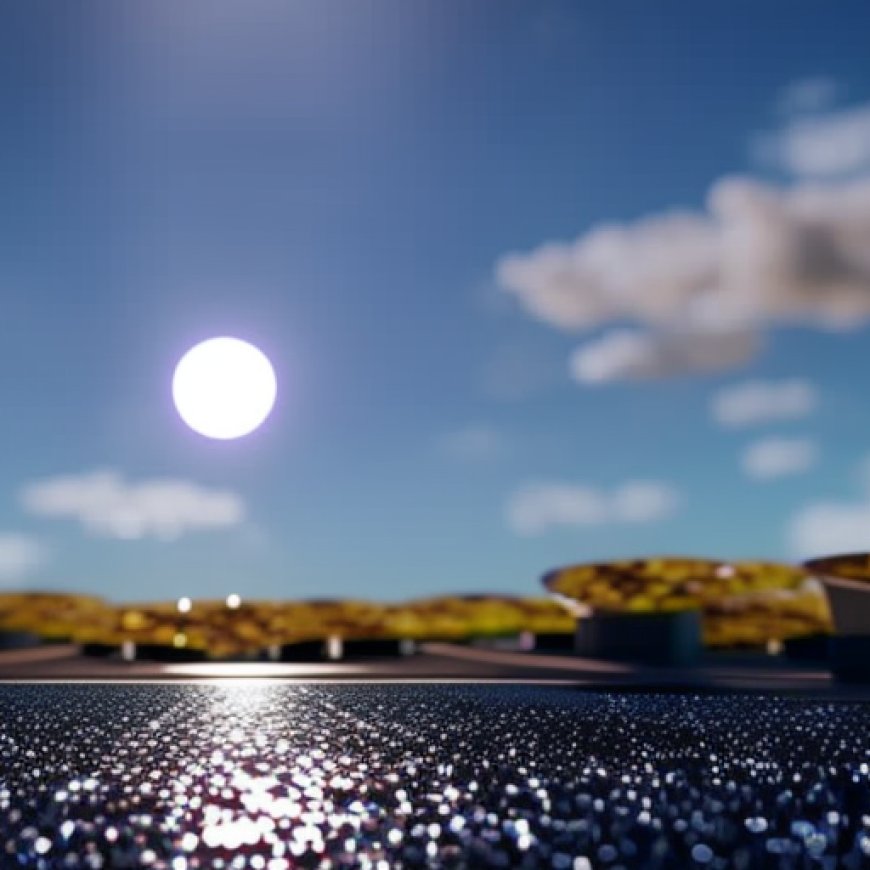Circular Economy Mfg creates solar-powered recyling “microfactory”
Circular Economy Manufacturing creates solar-powered "microfactory" Dezeen


Design Group Creates Solar-Powered MicroFactory for Plastic Waste Conversion
Design group Circular Economy Manufacturing has created a small factory that uses solar energy to convert plastic waste into household items and city infrastructure on Governors Island.
The MicroFactory
The portable facility, named MicroFactory, was designed to turn household consumer plastic waste into usable objects within communities. Created by New York sustainability start-up Circular Economy Manufacturing (CEMfg), the factory was constructed within a 20 by 7.5 foot (six by two meters) shipping container and installed on Governors Island – a small car-less island off the shore of Manhattan. Its shipping container envelope was designed to make it easy to install on the island and easy to be transported in the future. It was painted white to absorb less heat and keep the equipment cool. A clear garage door and windows were installed on the facade to allow passersby to see the equipment inside at work.
Sustainable Energy Source
An array of 25 photovoltaic panels – a ten kilowatt array in total – was placed on top of the container and run through a solar inverter connected to batteries, which store the power and allow the factory to be 100 per cent solar-powered.
Plastic Conversion Process
To use the factory, people must bring used, cleaned plastics and place them in an on-site shredder. The shredded plastic is then placed in a machine that feeds it into a Rotational Molding Machine. The machine uses heat and movement to melt and then cool the plastic into preset molds. Multiple different molds can be clamped on at each cycle, and the team said it could produce six large street traffic cones in one cycle.
Impact and Future Plans
“We plan on growing our start-up by selling the small products to citizens, the urban infrastructure products to cities, and our whole MicroFactory to communities or countries,” said CEMfg co-founder Barent Roth. “Every recycling center around the world could have a MicroFactory on-site immediately converting single-use plastic into durable essential products.”
So far, the factory on Governors Island has produced lamps and planters that have been sold back to the public to fund future endeavors. Because the company is still small, the sorting is done by hand, and Roth said the team does not melt plastic that it cannot identify. “High Density Polyethylene (HDPE) #2 is our preferred plastic,” said Roth. “It has a relatively low melting temperature and is readily available in a wide range of colors.”
Sustainable Development Goals (SDGs)
- SDG 7: Affordable and Clean Energy
- SDG 9: Industry, Innovation, and Infrastructure
- SDG 11: Sustainable Cities and Communities
- SDG 12: Responsible Consumption and Production
- SDG 13: Climate Action
- SDG 17: Partnerships for the Goals
Conclusion
The MicroFactory project on Governors Island showcases the potential of circular manufacturing and sustainable waste management. It aligns with several Sustainable Development Goals (SDGs), including affordable and clean energy, industry innovation and infrastructure, sustainable cities and communities, responsible consumption and production, climate action, and partnerships for the goals. The team at CEMfg aims to expand their initiative by deploying more MicroFactories to locations with plastic pollution and consistent sunlight, creating green jobs, reducing greenhouse gas emissions, diverting plastic waste from landfills, and educating community members about the benefits of circular manufacturing.
SDGs, Targets, and Indicators in the Article
SDGs Addressed or Connected to the Issues Highlighted in the Article:
- Sustainable Development Goal 7: Affordable and Clean Energy
- Sustainable Development Goal 9: Industry, Innovation, and Infrastructure
- Sustainable Development Goal 11: Sustainable Cities and Communities
- Sustainable Development Goal 12: Responsible Consumption and Production
Specific Targets Under Those SDGs Based on the Article’s Content:
- SDG 7.2: Increase substantially the share of renewable energy in the global energy mix
- SDG 9.4: Upgrade infrastructure and retrofit industries to make them sustainable
- SDG 11.6: Reduce the adverse per capita environmental impact of cities, including by paying special attention to air quality and municipal and other waste management
- SDG 12.5: By 2030, substantially reduce waste generation through prevention, reduction, recycling, and reuse
Indicators Mentioned or Implied in the Article:
- Use of solar energy to power the MicroFactory (indicator for SDG 7.2)
- Conversion of plastic waste into usable objects within communities (indicator for SDG 9.4 and SDG 12.5)
- Reduction of plastic waste in landfills (indicator for SDG 12.5)
Table: SDGs, Targets, and Indicators
| SDGs | Targets | Indicators |
|---|---|---|
| SDG 7: Affordable and Clean Energy | 7.2: Increase substantially the share of renewable energy in the global energy mix | Use of solar energy to power the MicroFactory |
| SDG 9: Industry, Innovation, and Infrastructure | 9.4: Upgrade infrastructure and retrofit industries to make them sustainable | Conversion of plastic waste into usable objects within communities |
| SDG 11: Sustainable Cities and Communities | 11.6: Reduce the adverse per capita environmental impact of cities, including by paying special attention to air quality and municipal and other waste management | Reduction of plastic waste in landfills |
| SDG 12: Responsible Consumption and Production | 12.5: By 2030, substantially reduce waste generation through prevention, reduction, recycling, and reuse | Conversion of plastic waste into usable objects within communities |
Note: The indicators mentioned in the table are based on the information provided in the article.
Behold! This splendid article springs forth from the wellspring of knowledge, shaped by a wondrous proprietary AI technology that delved into a vast ocean of data, illuminating the path towards the Sustainable Development Goals. Remember that all rights are reserved by SDG Investors LLC, empowering us to champion progress together.
Source: dezeen.com

Join us, as fellow seekers of change, on a transformative journey at https://sdgtalks.ai/welcome, where you can become a member and actively contribute to shaping a brighter future.







